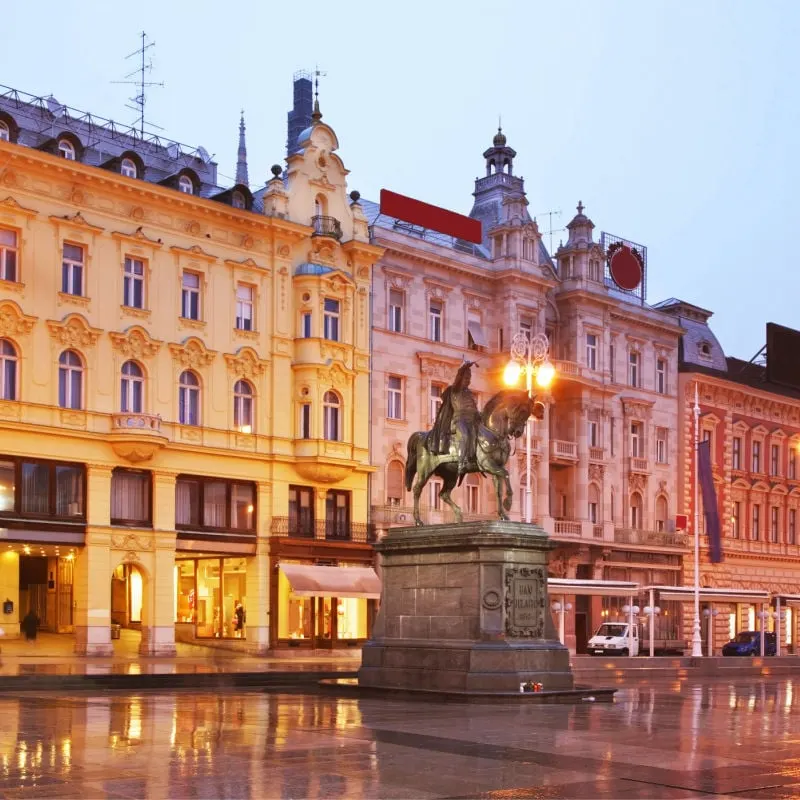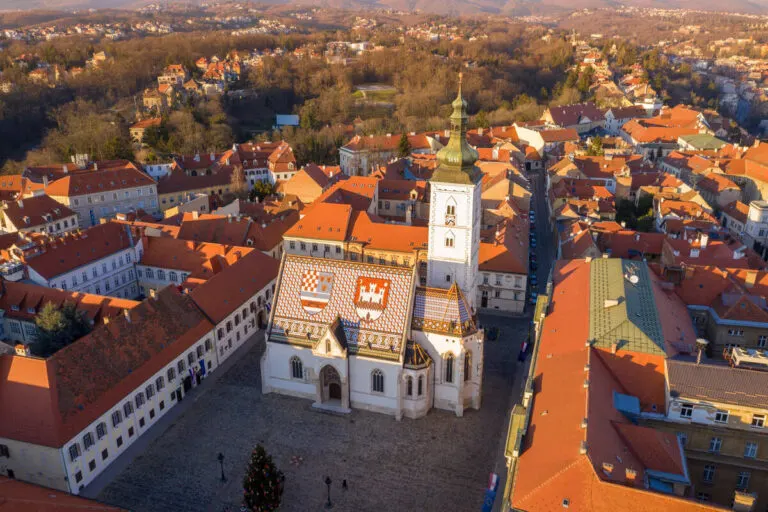Croatia has been on every digital nomad’s radar since it became the first European nation to launch a Digital Nomad Visa (DNV) as early as 2020 when a majority of countries were still openly opposing the category and were in fact adding additional barriers for aspiring migrants.
Ever since, remote workers have been flocking to the land of the Croats for its beaches, laid-back lifestyle, and Mediterranean culture.
Sadly, as customary with every off-path destination that suddenly sees a popularity boom, prices have started increasing dramatically.
Croatia is not only a nomad hotspot: it’s become one of Europe’s top sunny getaways, and the increased cost of living has started to reflect this new era in Croatian History, marked by the introduction of the Euro last year and its overall distancing from Eastern European standards.
Once dubbed the ‘budget-friendly alternative to Italy’, it is now not only much cheaper than its neighbor lying on the opposite side of the Adriatic, but unlike in Italy, that doesn’t mean nomads no longer have a place here: they simply have been looking for that home away from home in all the wrong places.

Forget about jam-packed, shockingly pricey Dubrovnik or increasingly-boujee St. Tropez-y Hvar.
Leave those for vacationers willing to pay triple the average Airbnb rate. If you’re a digital nomad, these are the top 4 best Croatian cities to live:
Rijeka
The third-largest city in Croatia, Rijeka (or Fiume) is a lively seaport distinguished for having a strong, noticeable Italian heritage, where ethnic Istrian cuisine and a unique combination of ancient charm and modernity awaits.

Strolling around the Old Town, you will find a high concentration of historical structures, including Venetian-inspired buildings, a medieval cathedral, and an ancient hilltop Roman castle, while the marina is dominated by high-rises and luxury resorts.
For nomads specifically, Rijeka is full of work-friendly cafes, with the well-frequented Priroda i društvo being a local favorite among expats, and it’s highly sought-after for its lively social scene, as it is a youthful, university town.
Most importantly, it offers cheaper prices than overtouristed Dalmatia.

According to Nomad List, it costs $1667 per month to live in Rijeka, with safety being a huge pro, as well as multiculturalism: most Istrians are receptive to foreigners and will speak multiple languages, most notably Italian and English, making it easier for newcomers who don’t know Croatian to integrate.
Osijek
Visitors to Croatia will concentrate along the Adriatic oceanfront, paying the Central European hinterland dust, and this is where unheard-of Osijek comes into play as a strategic ‘workcation’ hub for remote workers looking to beat the crowds.

Located in the Slavonian provinces, close to the Serbian border, it is the cultural heart of its region, halfway between being a laid-back town and a major city, with under 100,000 residents and an impressive concentration of historical landmarks.
Osijek is perfect for the History-buff nomad, as it is characterized by a charming, Austria-Hungary-era Old Town; it houses Croatia’s most monumental Neo-Gothic cathedral – the beautiful Church of St Peter and St Paul – and its Museum of Slavonia is world-class.

Other than the overload of culture, the abundance of green areas and car-free zones will help you unwind after a long day of work, and the low prices, from accommodation down to food at restaurants, will encourage you to stay longer: you will need on average $1303 per month to call Osijek home.
Cavtat
Dubrovnik has made headlines in recent years as a real-life King’s Landing, thanks to its association with Game of Thrones, and the perfect European summer destination, yet little is said about the surrounding, wider Dubrovnik-Neretva County, let alone the charming fishing village of Cavtat.

The only Dalmatian settlement to make this list, Cavtat remains very much a ‘niche’ destination for visitors to Croatia’s far South, usually those who are staying longer, and more specifically even, taking day trips out of Dubrovnik, meaning it is not nearly as crowded.
Basing yourself in this sleepy, 2,000-people-strong town, you will have an inviting turquoise Adriatic as your morning view, limited crowding, despite being a short half-hour drive from Croatia’s busiest destination, and the peace that comes in the evenings when daytrippers and cruisers are gone.

This Dalmatian gem is not as well-equipped to host long-term guests as the other larger cities mentioned here, but there are plenty of month-long Airbnb rentals in the market, usually at cheaper rates than in Dubrovnik: in total, you should budget $1964 to live and work remotely from Cavtat.
Zagreb
Finally, the capital of Croatia should not be so quickly dismissed by remote workers as a potential destination.
No, it does not offer access to the ocean, and it is worlds apart from the picturesque, Romanesque Dalmatia, but it is arguably Croatia’s most vibrant city break.

With its exciting nightlife, possibly the most riotous one in the Balkans after Belgrade, a rapidly developing, skyscraper-dotted cityscape, and a plethora of coworking spots to choose from, Zagreb provides nomads with the perfect base for exploring the country.
Despite being a sprawling capital, it can also be charming and quaint, particularly with its walkable Old Town, a cobbled district full of unique museums, including a heart-wrenching one chronicling ‘Broken Relationships’, and famous for having a towering medieval cathedral.

The fact that Zagreb isn’t coastal may be seen as a downside by most, but in fact, it acts in its favor as a nomad destination: it tends to attract those who are genuinely interested in Croatian culture and in socializing, not merely the sunny weather and postcard beaches.
Finally, it is less expensive than Dalmatian Croatia, with nomads spending on average $1,644 per month to live there.
Credit: Source link

